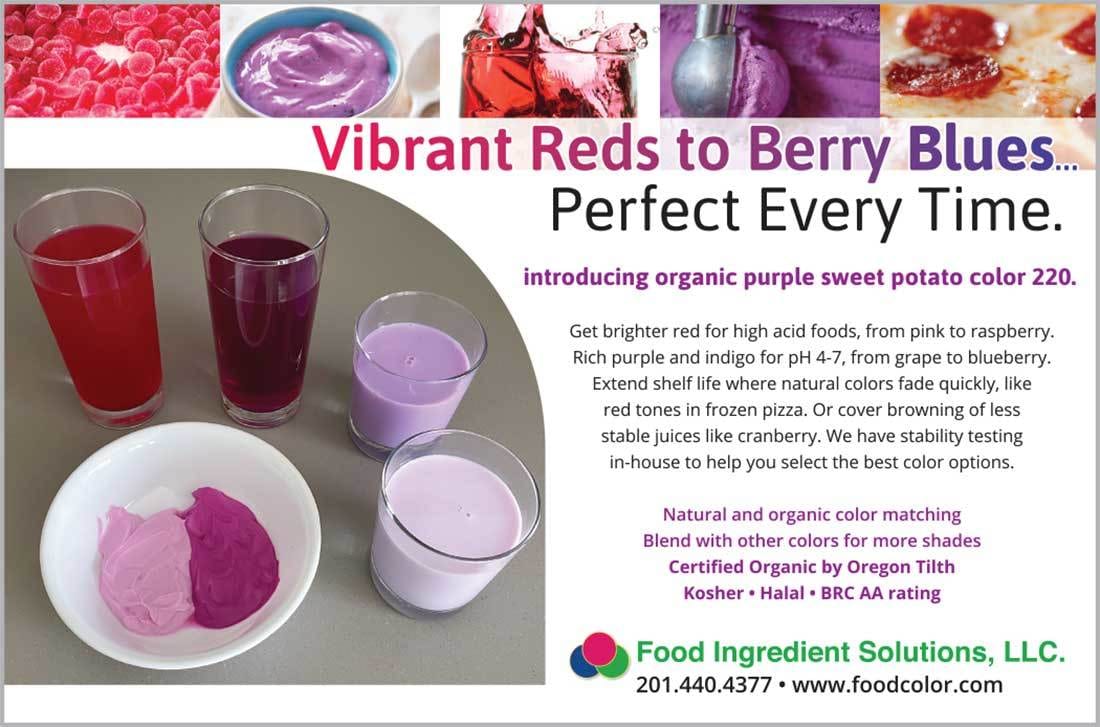CULINARY
creations
Color
See
Chefs
How
Most food is judged by the consumer before it’s ever tasted. The color and appearance of foods and beverages are a primary aspect of what encourages someone to desire and taste them. The vibrant greens of fresh produce, the rainbow hues of fruits, or the more subtle, creamy beiges and golds of cheeses, and the rich browns of baked goods and seared meats can awaken a slumbering palate.
Research chefs and other professional cooks are continuously seeking ways to preserve and enhance the colors in finished foods and beverages. And the more consumers demand “clean-label” products, the more straightforward and authentic (with simple preparations) the end result must be—while still being visually attractive and desirable. Consumers want to feel more connected to the ingredients, including where and how they are grown.
“As an industry, our approach to food has been about embracing minimally processed ingredients and allowing the natural flavors and colors of the foods to be enough,” says Melissa Fritz, CMB, CEPC, CHE, an associate professor for The Culinary Institute of America. “As a pastry chef, I often use richly colored powdered fruit or vegetable pigments in doughs, batters, icings, and even in gum paste flower embellishments. These pigments go a long way toward adding provocative color to the foods we eat.”
With demand driving technology, ingredient companies are now able to offer manufacturers naturally derived colorants in an astonishingly detailed range of tones and shades, applicable across multiple food categories. These new colors comply with industry requirements for high stability and cost-efficiency, and with consumers’ desire for natural, healthy ingredients.
A natural trend
Many of these natural colors rely on what chefs have turned to for years: fruits and vegetables with powerful colors of their own. These range from the deep reds of concentrated tomato (such as from tomato paste) to purples and blues from red cabbage, and greens from leafy vegetables such as spinach and kale. While the agriculture involved for the industrial-scale production of many plant sources of colors is ecologically sound, sustainability and resource conservation have spurred color makers to seek even greener pastures.
By WILL PACKWOOD, Contributing Culinary Editor
Photo courtesy of: Food Ingredient Solutions, LLC
For research chefs, the focus on food colors takes on a different hue.
Eye Over Matter
In a recent full-sensory test by a colorant producer, researchers confirmed a correlation between increased food color vibrancy and purchase intent. Results showed that color’s impact led to a 4% increase in purchase intent, a 4% increase in overall product liking, and an impressive 12% increase in flavor perception. Testing also showed that a change in hue from “low color” or “colorless” to “optimized vibrant color” increased purchase intent across categories by an average of 6%.
“My favorite natural coloring agents are hibiscus, saffron, beet powder, coffee powder, and annatto,” notes Lilla Bernal, CMB, CHEP, an assistant professor at the Culinary Institute of America. She notes that to keep greens green in a basil or cilantro pesto or sauce, she blanches the leaves and then purées them with oil.
Back to basics
Most chefs and R&D teams have no objection to using such natural colorants, yet recent trends also have them returning to techniques and elements that preserve and reinforce the natural colors of the foods they create. For centuries, cooks and chefs used specific preparation methods and natural additives that preserve and enhance ingredients’ original hues.
The goal today is that, first and foremost, a food should look like what it is: a raspberry purée should be a rich, vermillion red; basil pesto should be a deep, vivid green; and cauliflower soup should be bright ivory white. Consumers’ perceptions of a food and its flavor are tied to specific colors, and the richness of those colors strongly influences the perception of the flavor.
As an example, in one study on the influence of food color, researchers found that orange juice with a deeper orange color is perceived to be sweeter than orange juice with a lighter color, even when cane sugar is added to make the lighter-colored juice sweeter than the darker one.
The first step in accomplishing color diversity and presentation is sourcing the right products that demonstrate the perceived colors of quality and ripeness. Once quality ingredients are acquired, precise yet straightforward techniques can be used to preserve the natural colors. Additives can intensify color, and in some applications, natural ingredient powders can be used to add specific hues.
Dehydrated and powdered fruits and vegetables are often used as a clean food additive to modify or intensify the color of food items. Ingredient powders often contribute little flavor and are relatively inexpensive. Fruit and vegetable juice powders tend to impart more flavor, though at a higher cost due to the lower yields during the production process.
Fermentable color
An innovation in colorant technology has taken sustainable development a step further. One start-up has mastered the technique of using fermentation via baker’s yeast to create its patented, agriculture-free technology for color production. The colors can be used in place of plant extracts that are either prone to contamination in the production chain, carry misleading claims of sustainability, or just cannot provide consistency in a product.
A trip around the color wheel will demonstrate some of the ways today’s chefs are approaching colorful presentation of foods through both ingredients and techniques.
Green
Green foods imply fresh, crisp, subtly sweet or astringent produce. Certain green vegetables, such as broccoli, green beans, and peas, can preserve their natural color without adding colorants. This is done by blanching at high temperatures in heavily salted water, then immediately shocking in ice water to set the chlorophyll. Heavily salted water can reach temperatures higher than 212°F and will rebound faster from temperature loss due to foods being added. A short cook time will result in better color.
For some products, adding a small amount of baking soda to the blanching liquid also helps preserve the chlorophyll, resulting in a deeper color. However, the alkalinity also negatively impacts the retention of vitamins B, C, and D.
When preparing a dough, batter, purée, or baked good, vegetable powders are often utilized. Powders allow the user to easily control moisture content and more accurately scale formulas for production needs. Today’s vegetable powders are high-quality and preserve color and nutrients to a greater degree than their predecessors.
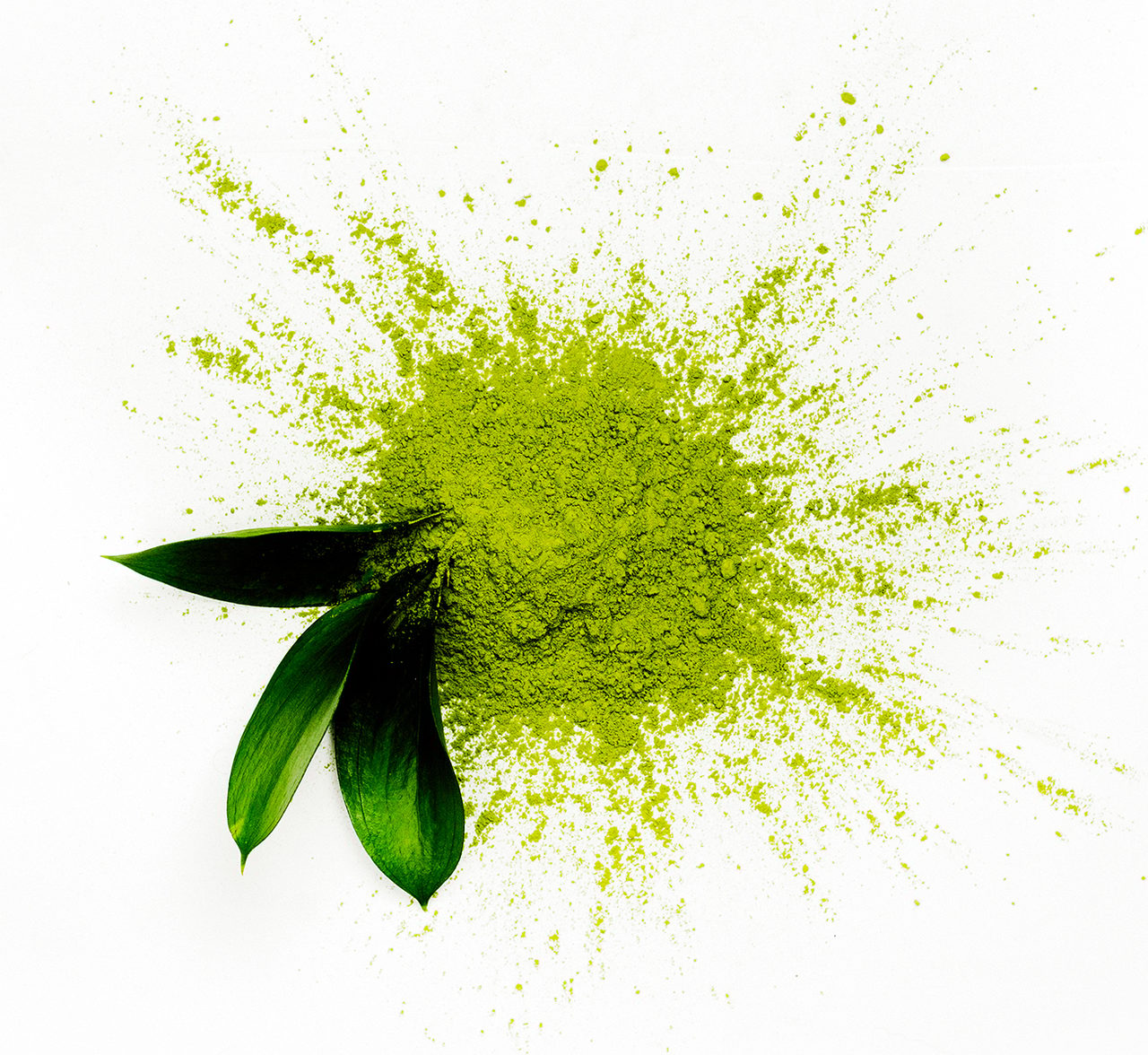
Matcha green tea powder took off quickly as a versatile green colorant that also brings beneficial phytochemicals to formulations. Photo courtesy of: Taiyo America, Inc./iStock/happy lark
Color wheel
Red
Red fruits and vegetables are loaded with carotenoid antioxidants (such as carotene and lycopene) and anthocyanins. These are more stable in acidic environments, and adding an acid of some type can sharpen the red hue and deepen the overall color.
Freeze-dried and powdered red berries, beets, and cherries are often used to add or boost red hues in desserts and baked goods. Puréed red fruits can be added to custards and frostings but risk appearing more pink than red. Tomato paste or powder can add depth of color and flavor in savory preparations, especially pasta and other doughs.
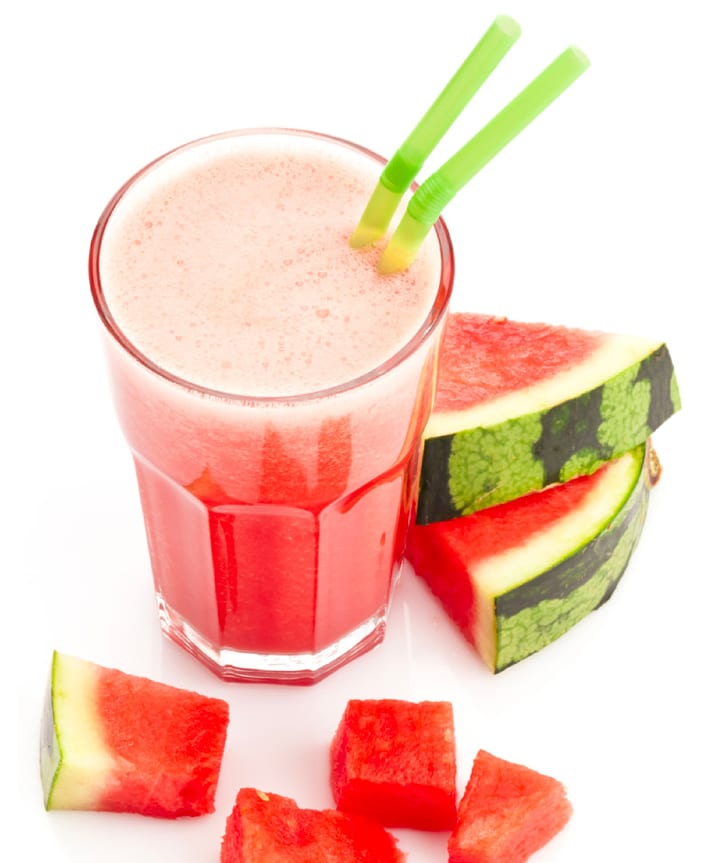
Color makers continue to fine-tune naturally derived colors and ways to preserve and enhance them, helping culinarians achieve the goal of visual authenticity. Photo courtesy of: Lycored, Ltd.
Orange
Orange foods tend to be high in beta-carotene, a fairly stable lipid-based compound. Pumpkins, sweet potatoes, winter squashes, papayas, apricots, and persimmons are just some of the fruits and vegetables that can add orange tones to a product. For orange root vegetables, roasting them whole and unpeeled can help improve the deep orange tones. Cooking carrots and most other starchy orange vegetables in an acidic solution will result in a lighter, bright orange final product, while cooking them in an alkaline solution will result in a deeper, dark orange product. Freeze-dried, powdered whole fruits and powdered juices of sweet potato, pumpkin, and squashes are readily available for use in doughs and baked goods.
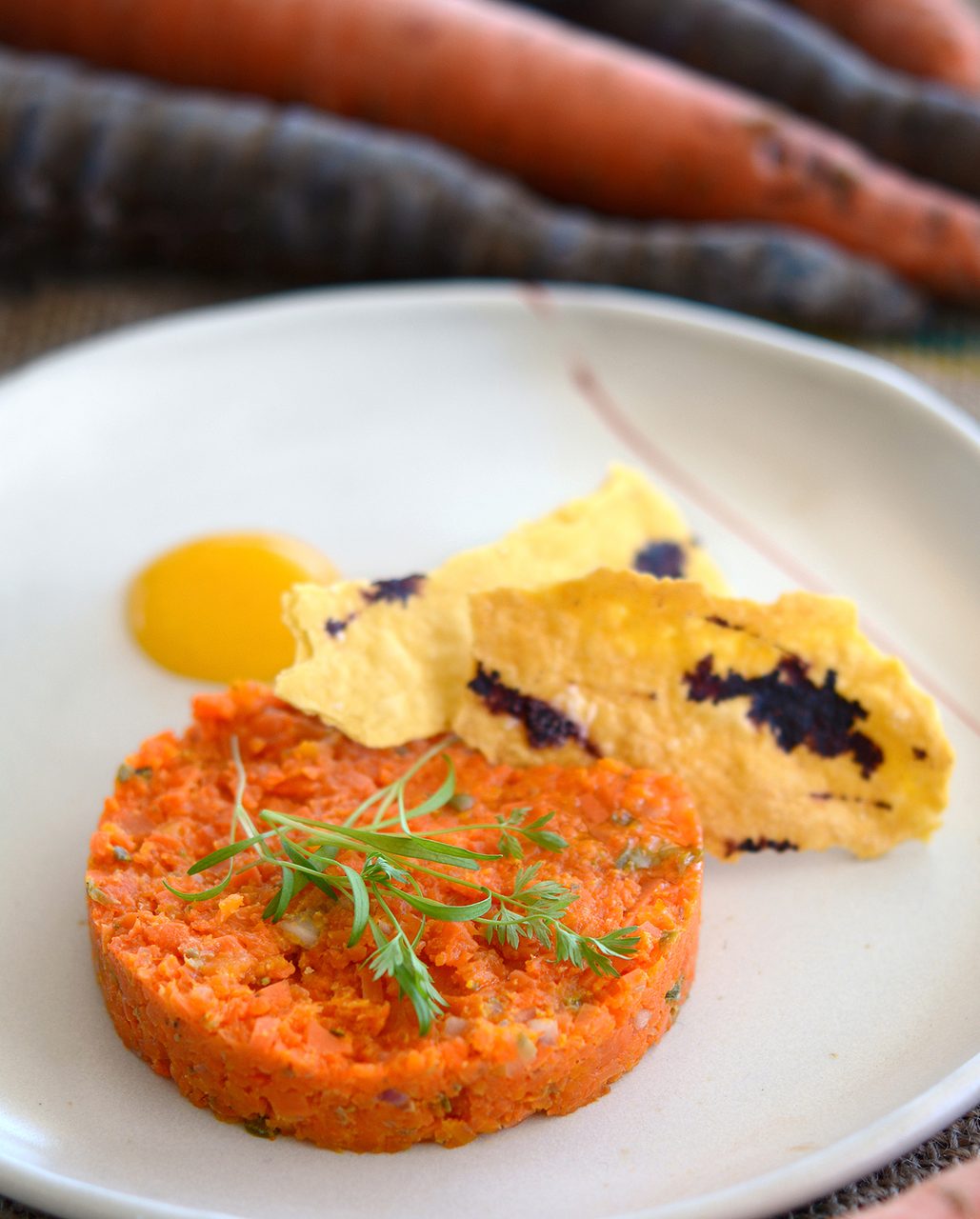
Ingredient technologists have followed the lead of chefs in creating bright, natural colors from plant sources, working with nature to refine stability and performance. Photo courtesy of: GNT Group/Exberry
Yellow
Like red, yellow excites and stimulates the appetite. Yellow and red used in conjunction produce a compelling combination. Turmeric is a popular additive used to impart and enhance yellow tones in foods. Turmeric can be allowed to age while exposed to air to soften its distinctive aroma and flavor.
Turmeric works well in wet and dry applications, savory dishes, baked goods, and pastas. A common but much more expensive ingredient used to add yellow color is saffron. When lightly toasted and ground, or steeped in liquid, saffron adds a rich golden glow and a powerful, heady aroma and flavor to formulations. It is often used in Southern European cuisine (think: paella), as well as Turkish, Persian, and Indian cuisines, in dishes ranging from pilafs and stews to pastries and ice cream.
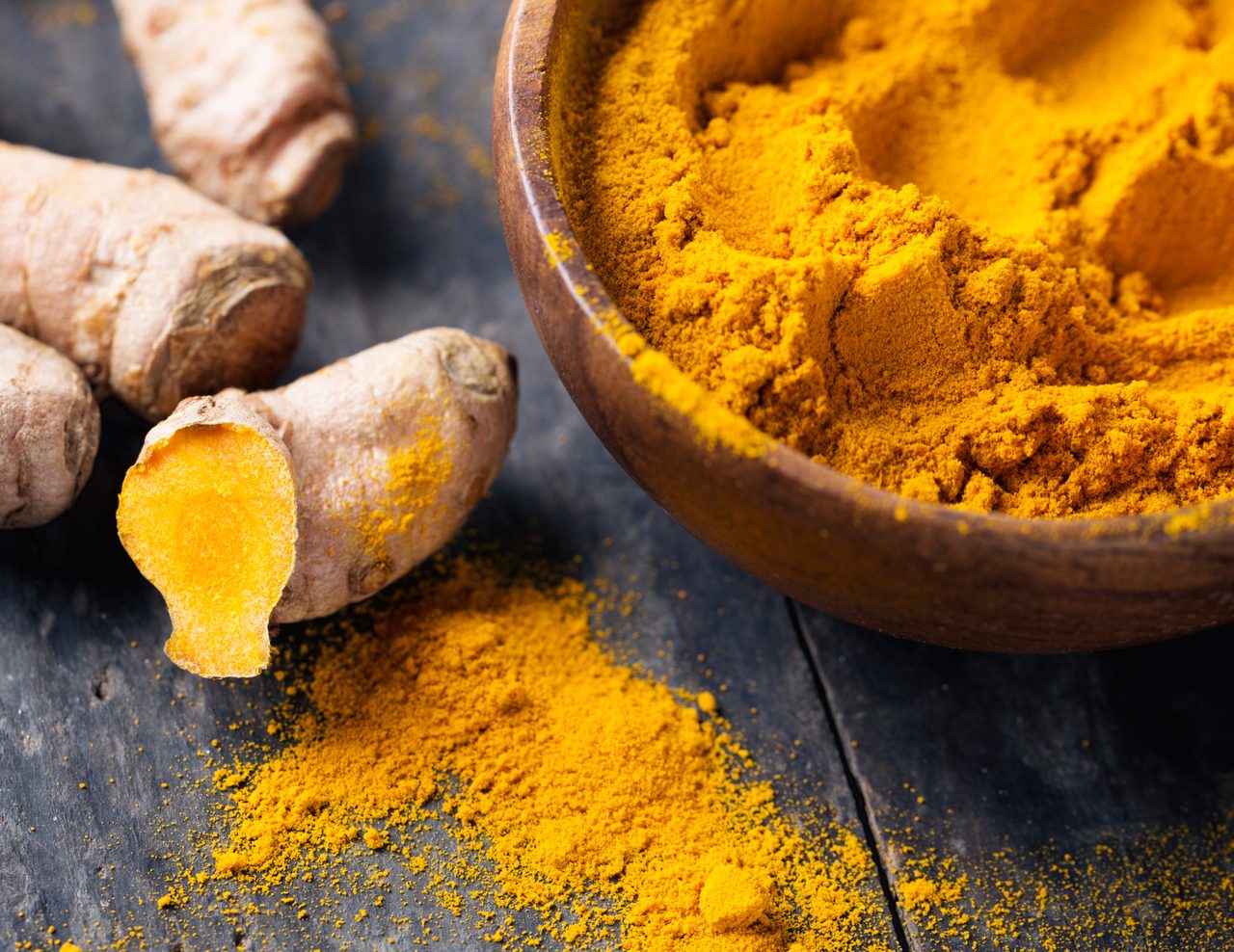
Bright golden yellow colors from turmeric and saffron have been popular for centuries in Asia and the Middle East. Photo courtesy of: Getty Images / Silvia Jansen
Blue
Few authentically blue foods exist. Research suggests that savory foods colored vivid blue negatively impact appetite and can even create disgust in some subjects. Yet blue has demonstrated success in beverages, candies, and some desserts. Cooking red cabbage in an alkaline solution will produce a blue color that can then be used as a natural food colorant. Many natural food color makers use this source. Recently, huito fruit (Genipa americana) has been successfully used to create a natural blue food colorant, as has spirulina.
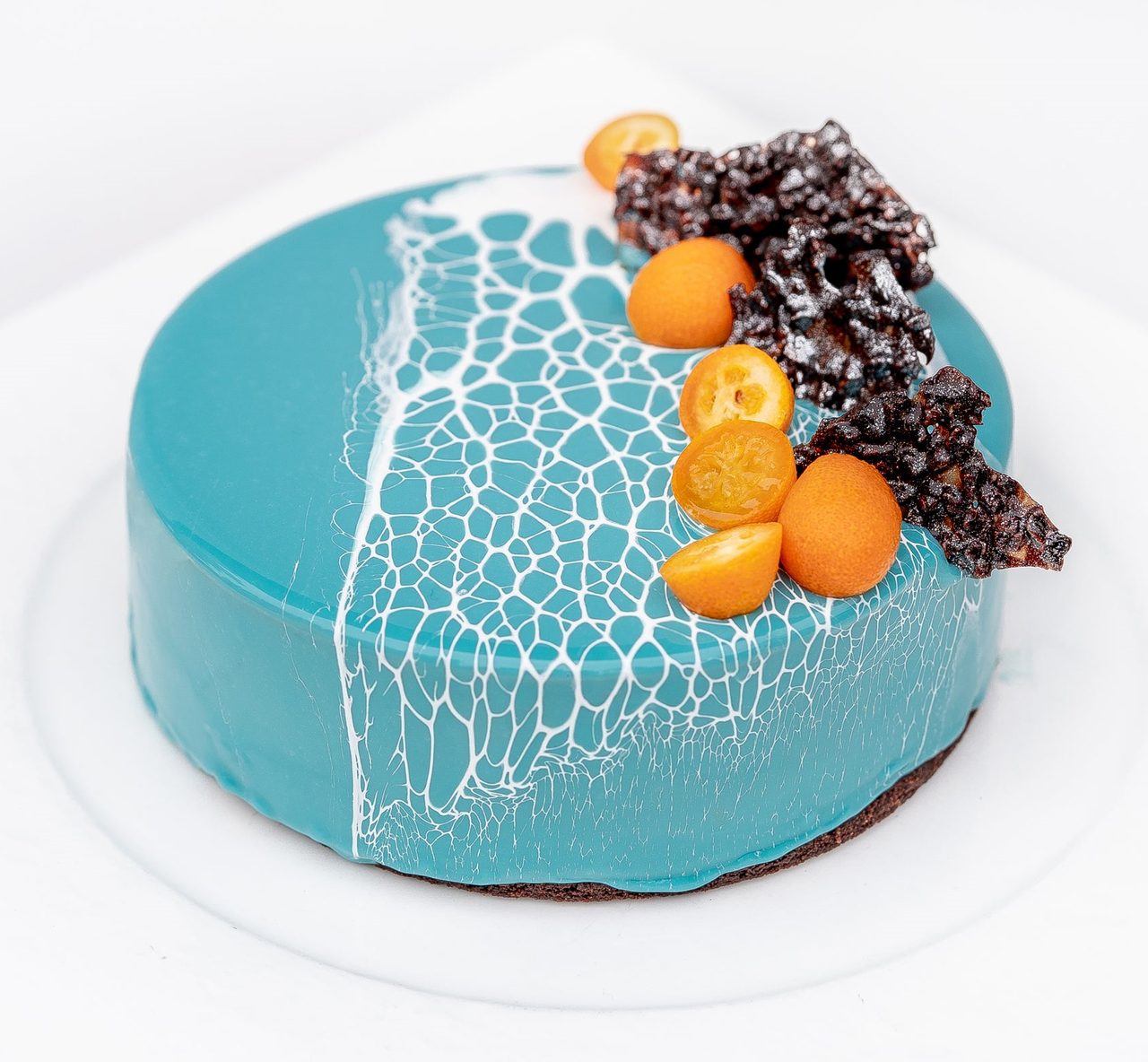
Bakers have been quick to take full advantage of new technology in natural colors that bring vivid hues and a wider spectrum of hues and tones. Photo courtesy of: Alexander’s Patisserie Co.
Black
Very few natural foods are genuinely black, primarily limited to a few grains, seeds, and spices. Squid or cuttlefish ink has been used for years to turn rice, pasta, and braised seafood coal black. However, it also adds briny flavor notes, and it is an allergen. Culinary ash is a grey-black powder created by burning various vegetables until all that is left is ash. There is some controversy over its use, however. Black spices and seeds, such as black sesame and nigella seeds, are a way to accent foods with black dots.
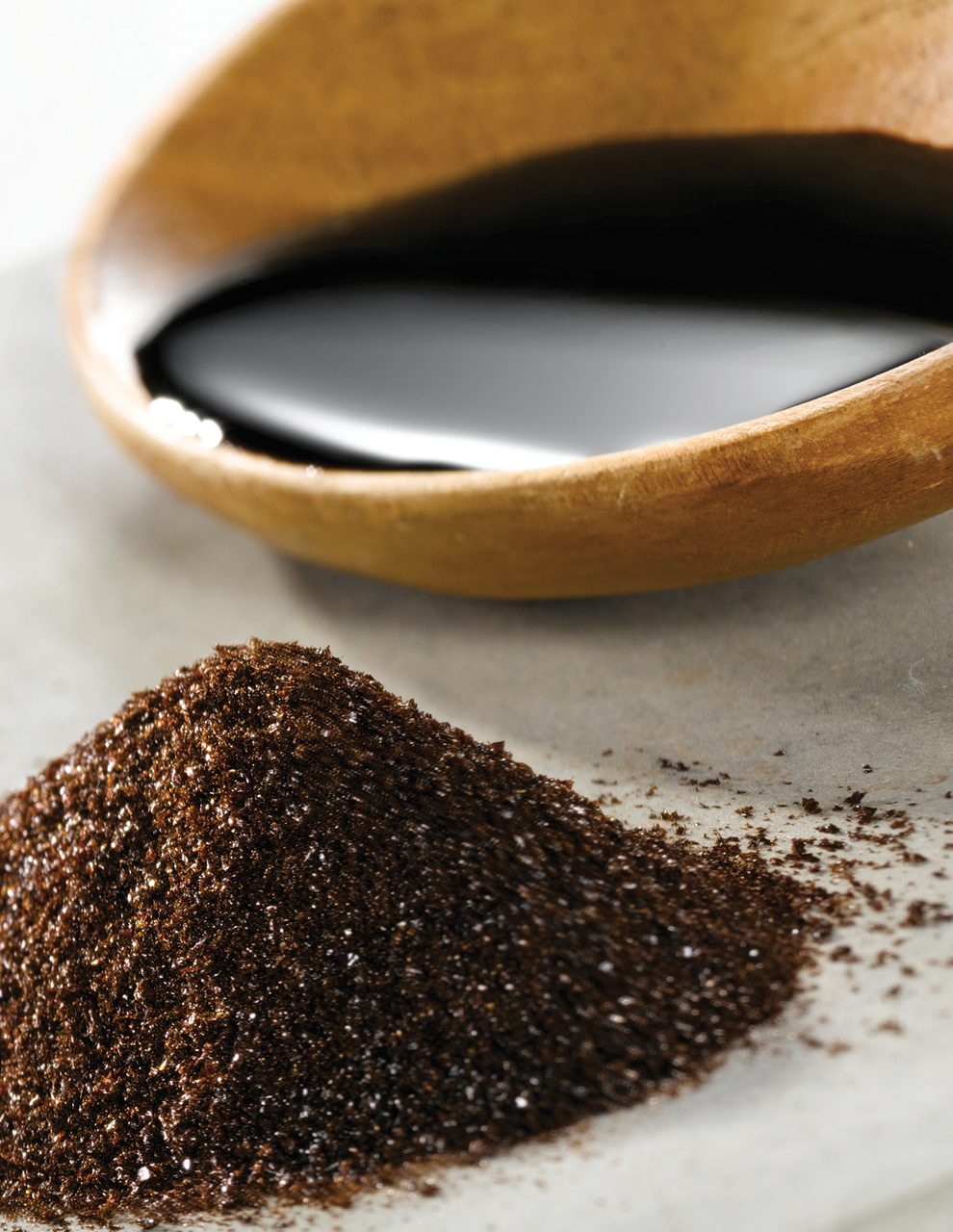
Chocolate and darker browns tones are commonly from caramel, but other sources, such as apples, can deliver rich brown colors, too. Photo courtesy of: Herbstreith & Fox, Inc.
White
White fruits and vegetables are often used to create a contrast versus the brighter, more vibrant colors of other foods. To achieve a whiter white, chefs often add a small amount of acid, usually ascorbate or citrate, to salted blanching water. Using a technique called “au blanc” also improves the white color of several vegetables. It involves simmering white vegetables in a mixture of water, fat of some kind, lemon juice, flour, and salt.
An updated au blanc method uses a controllable formula of 600g salt, 500g sugar, and 100g ascorbate. Only 3g of this mixture is needed per 100g of vegetable. The solution and product are packed and sealed under pressure for 10 to 20 minutes before cooking. The result is a bright white product that is slightly translucent.
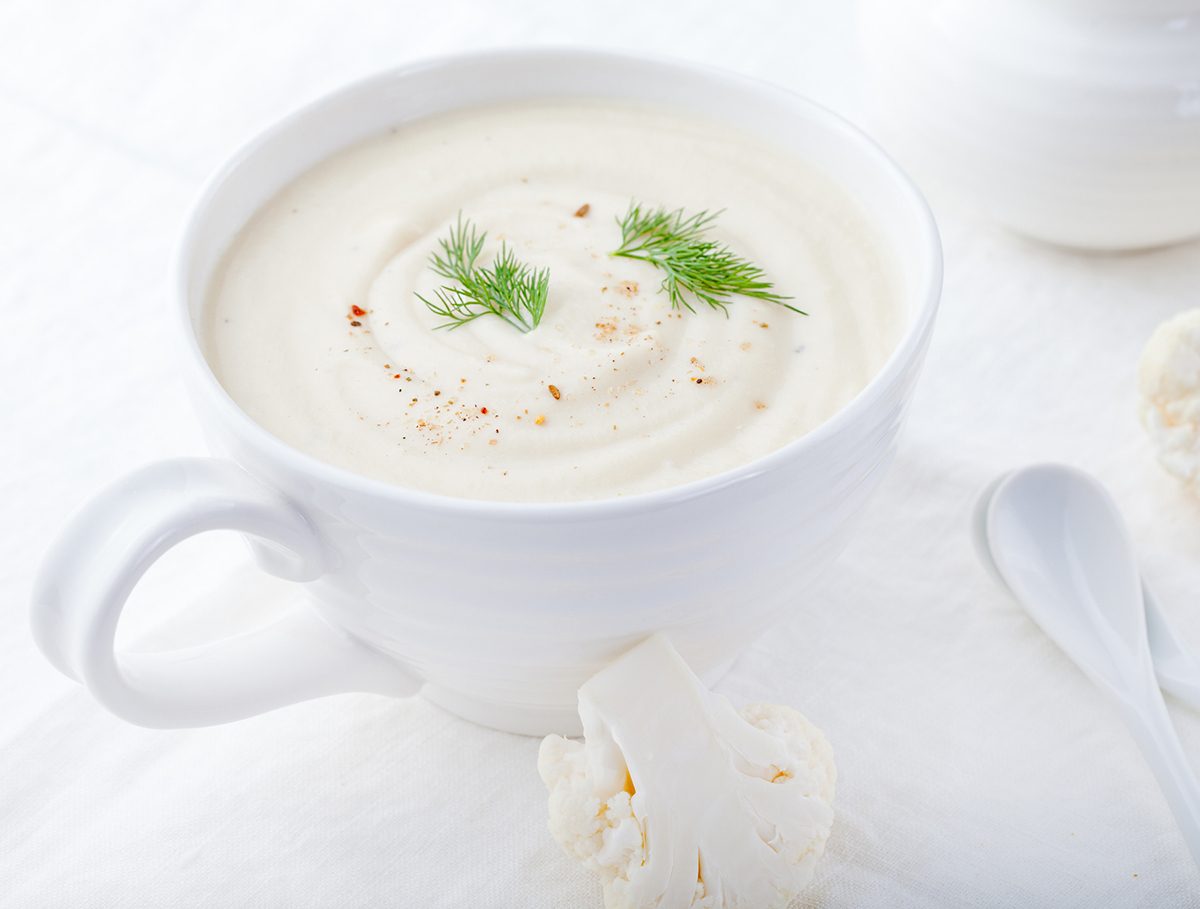
Preserving natural color can be as important as adding color, for example using a bit of added natural acid to keep white cauliflower white. Photo courtesy of: Getty Images / Anna Pustynnikova
Creating formulations that stimulate all the senses must start with the visual presentation to the consumer. The utilization of new and refined techniques and ingredients are essential in preserving and enhancing the natural colors of foods and beverages. PF
Will Packwood is a Chef Instructor at The Culinary Institute of America, Austin, Texas. With degrees the Culinary Institute and Texas A&M’s Tarleton State University, he has decades of experience as a culinary expert for the hospitality industry, with a strong focus on culinary management, molecular gastronomy, catering, product demonstration, and business development. He can be reached at Will.Packwood@culinary.edu or through Prepared Foods.
September 2021

